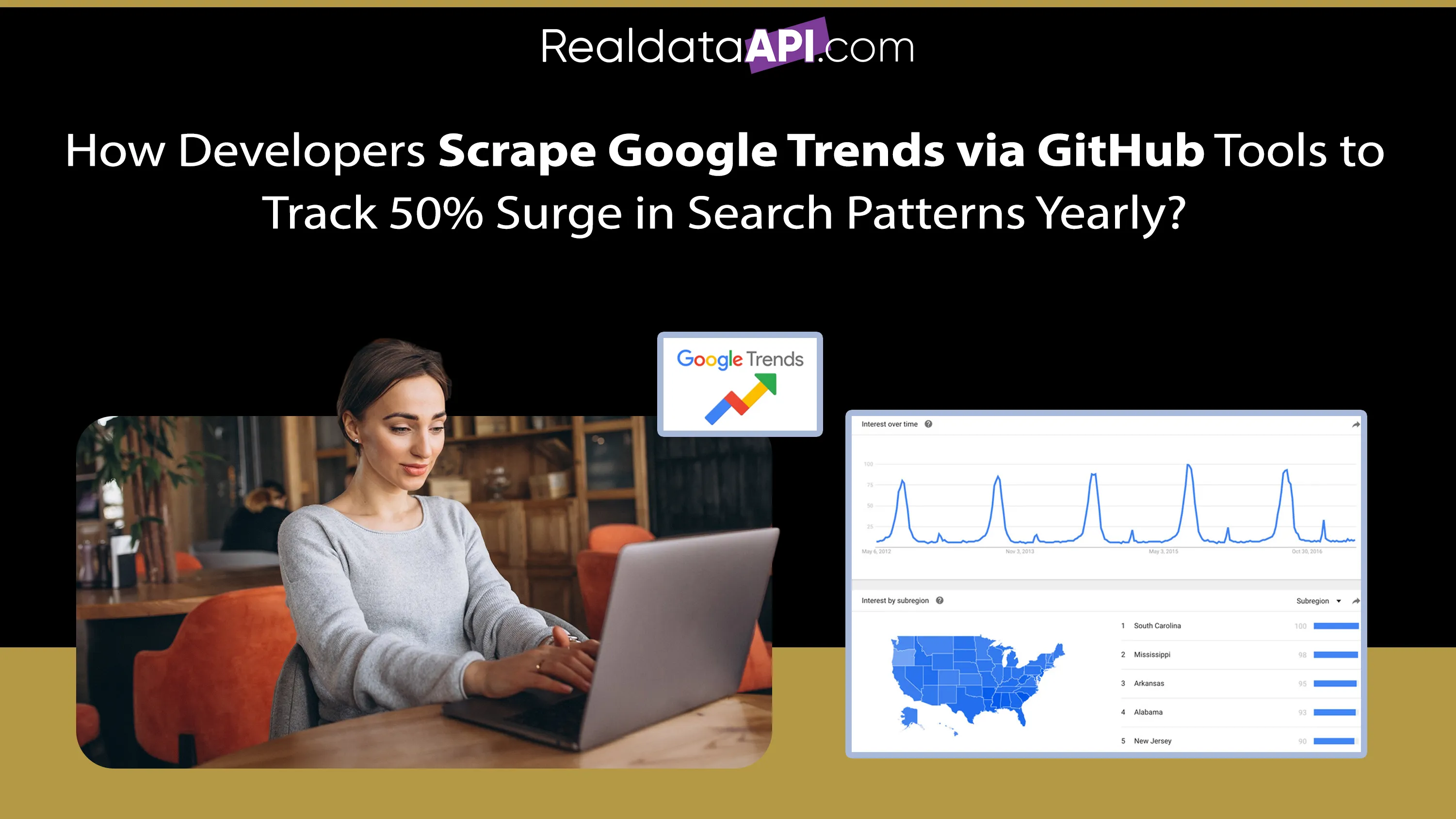

Introduction
In a world where travelers expect dynamic pricing, real-time updates, and personalized options, having access to reliable travel data can be a significant advantage. Skyscanner, a global travel aggregator, plays a vital role in offering users comparative flight, hotel, and car rental prices. But what if you could harness this rich data for business intelligence, competitor benchmarking, price monitoring, and dynamic content updates?
That’s where Skyscanner web scraping services come into play. In this comprehensive blog, we’ll walk you through the benefits, technical implementation, challenges, and ethical considerations of extracting data from Skyscanner using advanced scraping techniques and Skyscanner scraper tools.
Why Extract Data from Skyscanner?
.jpg)
Skyscanner is a goldmine of structured travel data. With coverage across airlines, booking platforms, destinations, and pricing trends, scraping Skyscanner allows businesses to:
- Compare dynamic flight fares
- Monitor hotel pricing and availability
- Analyze regional travel trends
- Build personalized travel apps or tools
- Optimize customer pricing strategies
The ability to gather your own Skyscanner travel dataset gives you a competitive edge in the highly volatile travel market.
What Kind of Data Can Be Scraped from Skyscanner?
You can use a Skyscanner scraper to extract the following datasets:
| Data Category | Example Fields |
|---|---|
| Flight Info | Airline, departure, arrival, price, layovers |
| Hotel Listings | Hotel name, location, price, amenities |
| Car Rentals | Company, model, price per day, location |
| Routes & Schedules | Popular routes, direct flights, schedule |
| Pricing Trends | Historical price data, seasonal changes |
Such Skyscanner travel datasets can be stored in databases or visualized using tools like Tableau or Power BI for insightful travel intelligence.
Unlock real-time travel insights by scraping Skyscanner flight prices, routes, schedules, and trends to optimize your booking strategies today!
Get Insights Now!How Skyscanner Web Scraping Works?
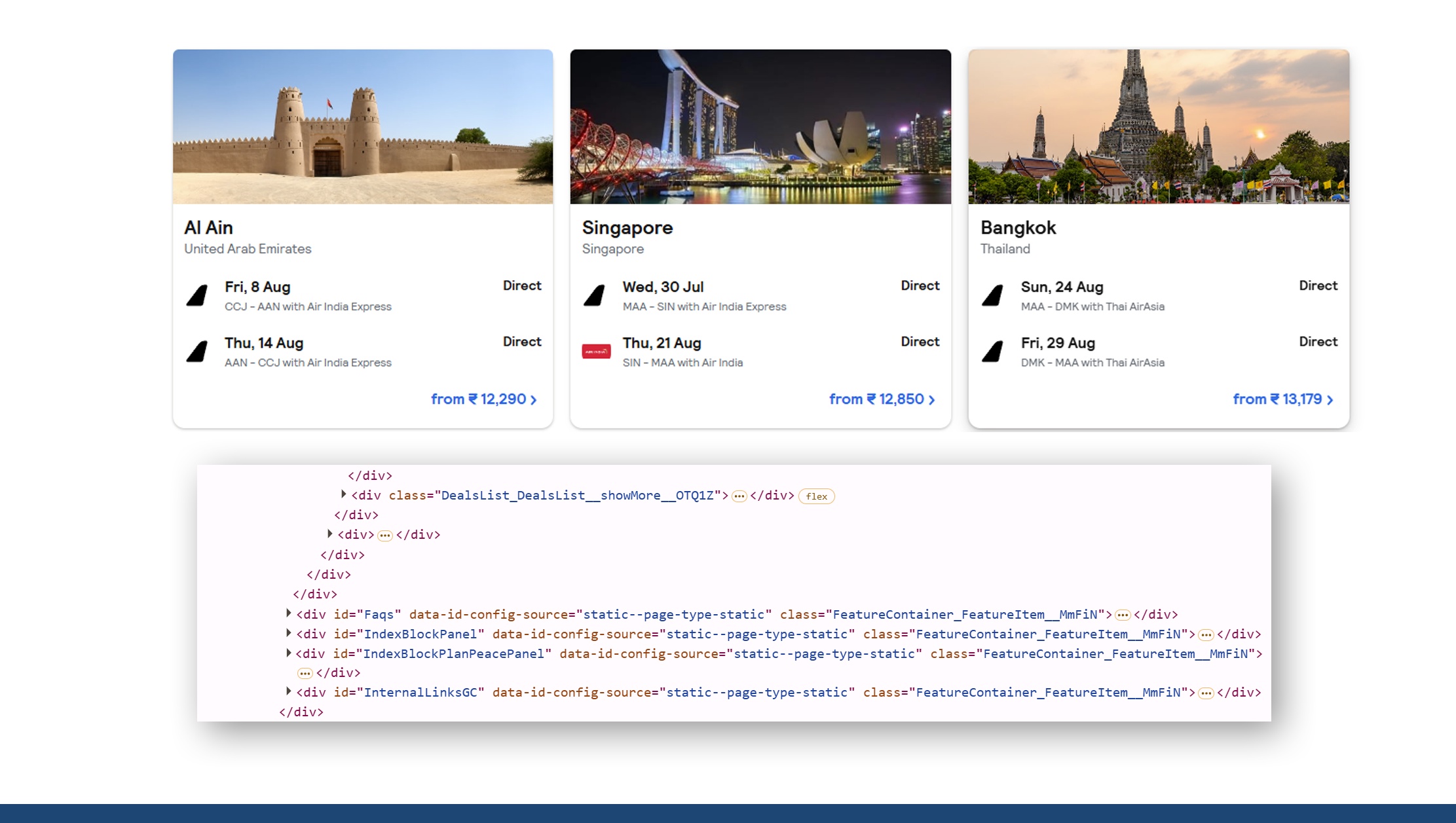
There are generally two approaches:
1. HTML Parsing
This is where your scraper fetches and parses the HTML content of Skyscanner search result pages.
- Tools: BeautifulSoup, Puppeteer, Playwright, or Selenium
- Requires handling JavaScript-heavy content
- Great for visual-heavy scraping with browser emulation
2. API Simulation
Many times, while loading the page, Skyscanner fetches content via backend APIs.
- Tools: Network inspection via DevTools
- More structured and faster to scrape
- Requires reverse engineering API endpoints
3. Headless Browsing
A browser runs without GUI (Graphical User Interface) but still renders JavaScript — ideal for scraping SPAs (Single Page Applications).
Step-by-Step Example: Build a Simple Skyscanner Scraper
Below is a simplified process to extract data using Python:
from selenium import webdriver
from bs4 import BeautifulSoup
import time
driver = webdriver.Chrome()
driver.get("https://www.skyscanner.net")
# Search for a flight (mock automation example)
time.sleep(5)
html = driver.page_source
soup = BeautifulSoup(html, 'html.parser')
# Example: Extracting flight data
flights = soup.find_all('div', class_='FlightsTicket_container')
for flight in flights:
airline = flight.find('span', class_='LegInfo__carrier').text
price = flight.find('span', class_='Price_mainPriceContainer').text
print(airline, price)
driver.quit()
Note: Always rotate proxies and user agents to avoid blocking. Use CAPTCHA solvers and browser headers for human-like simulation.
Use Cases of Skyscanner Web Scraping Services
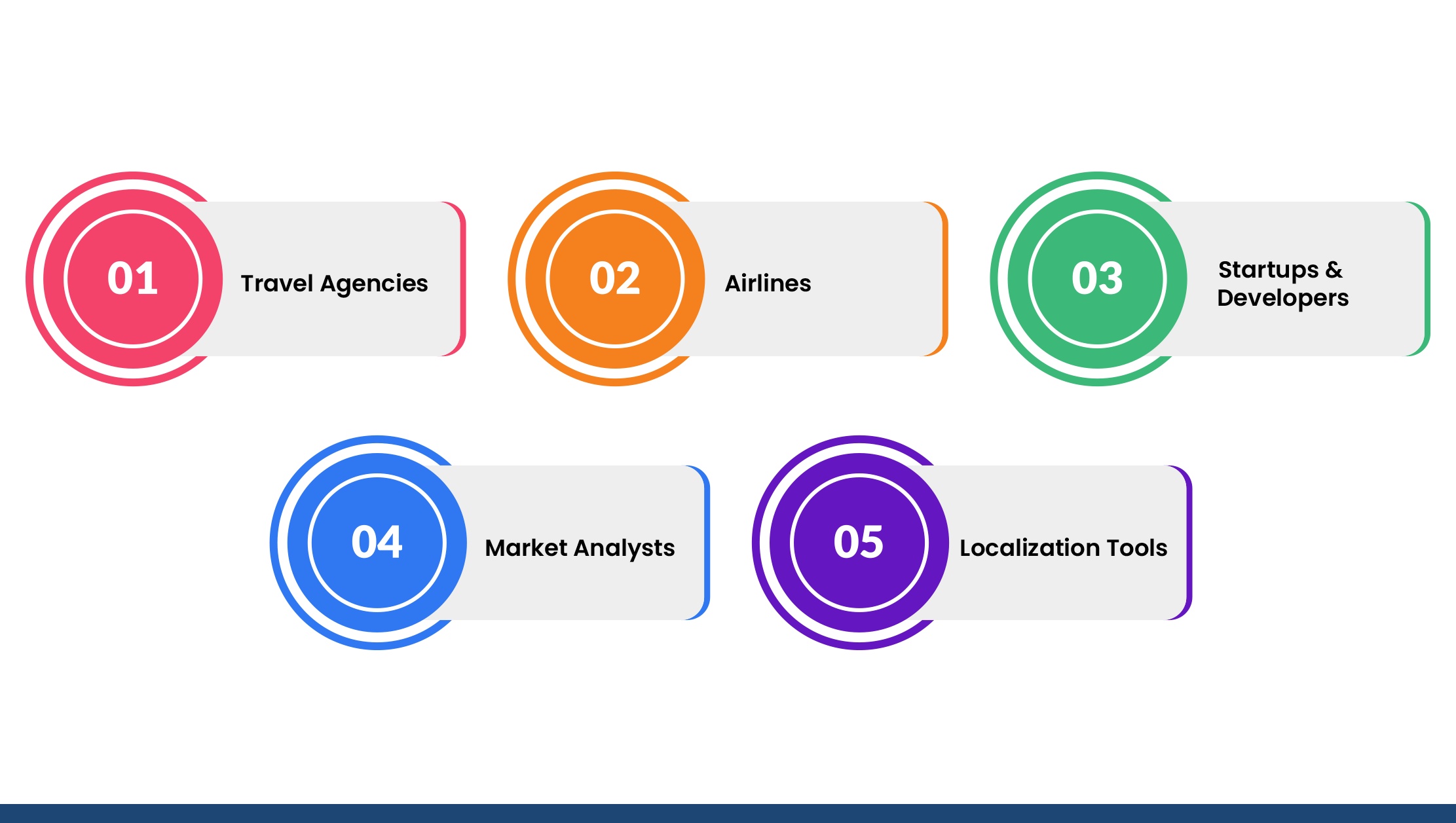
1. Travel Agencies
Automate fare comparison with real-time access to Skyscanner travel datasets and offer best-deal alerts to users.
2. Airlines
Scrape Skyscanner listings to benchmark against competitors and optimize routes and pricing strategies.
3. Startups & Developers
Build travel APIs or applications using live travel data from Skyscanner.
4. Market Analysts
Study trends, demand spikes, or historical pricing via scraped datasets.
5. Localization Tools
Understand top searches from specific regions to tailor offerings for regional travelers.
Leverage Skyscanner web scraping services to track fares, analyze travel trends, and enhance competitive pricing for smarter travel business decisions.
Get Insights Now!Is It Legal to Scrape Skyscanner?
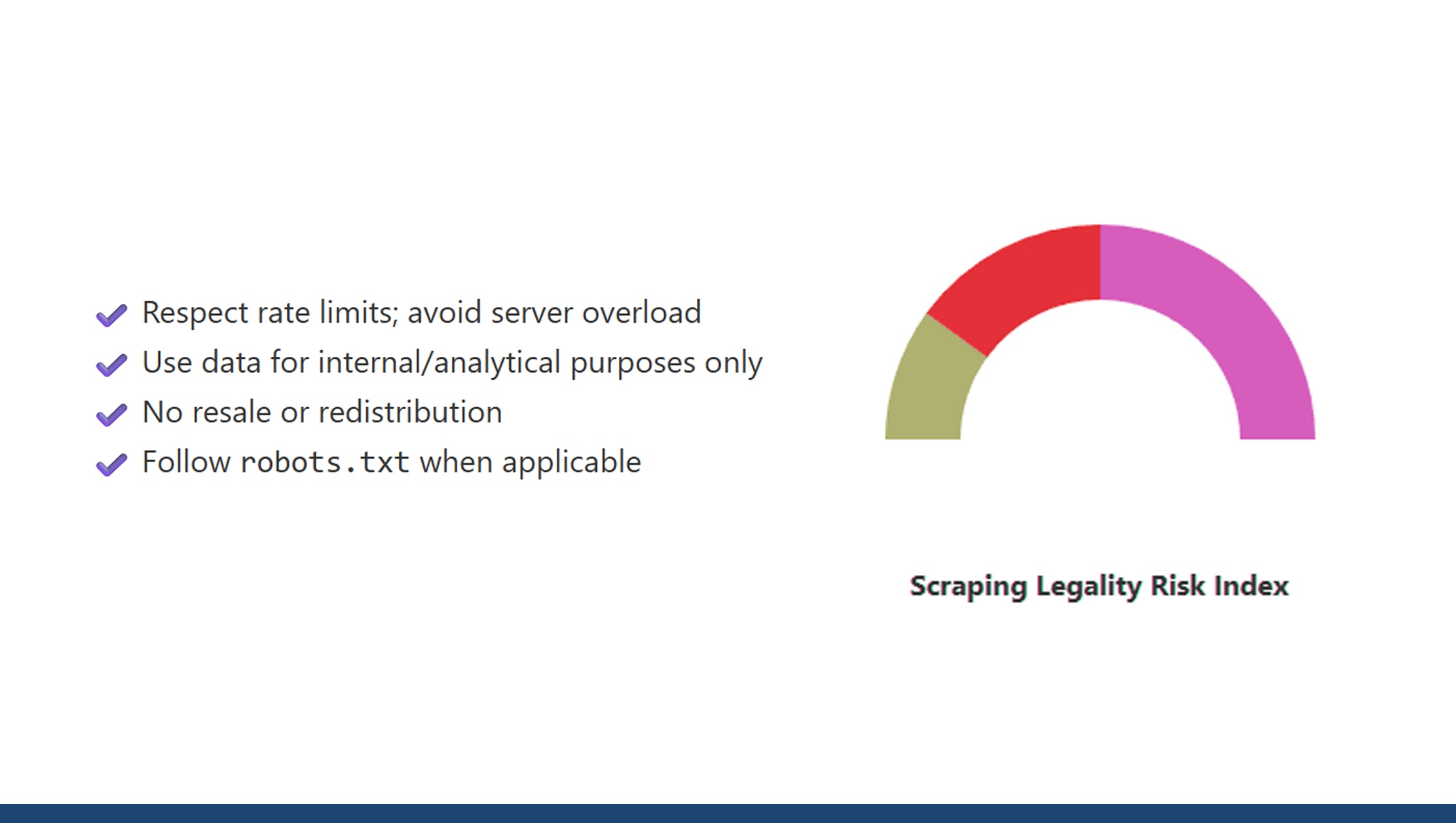
This is a gray area. Skyscanner’s terms of service generally prohibit scraping. However, many companies offer Skyscanner web scraping services while ensuring:
- They don’t overload servers (respecting rate limits)
- Data is used for analytical/internal purposes
- No resale or redistribution of scraped data
- They follow robots.txt where applicable
Alternative: Use authorized APIs where available, though these are limited in scope or require partnership.
Benefits of Using Skyscanner Scraper Services
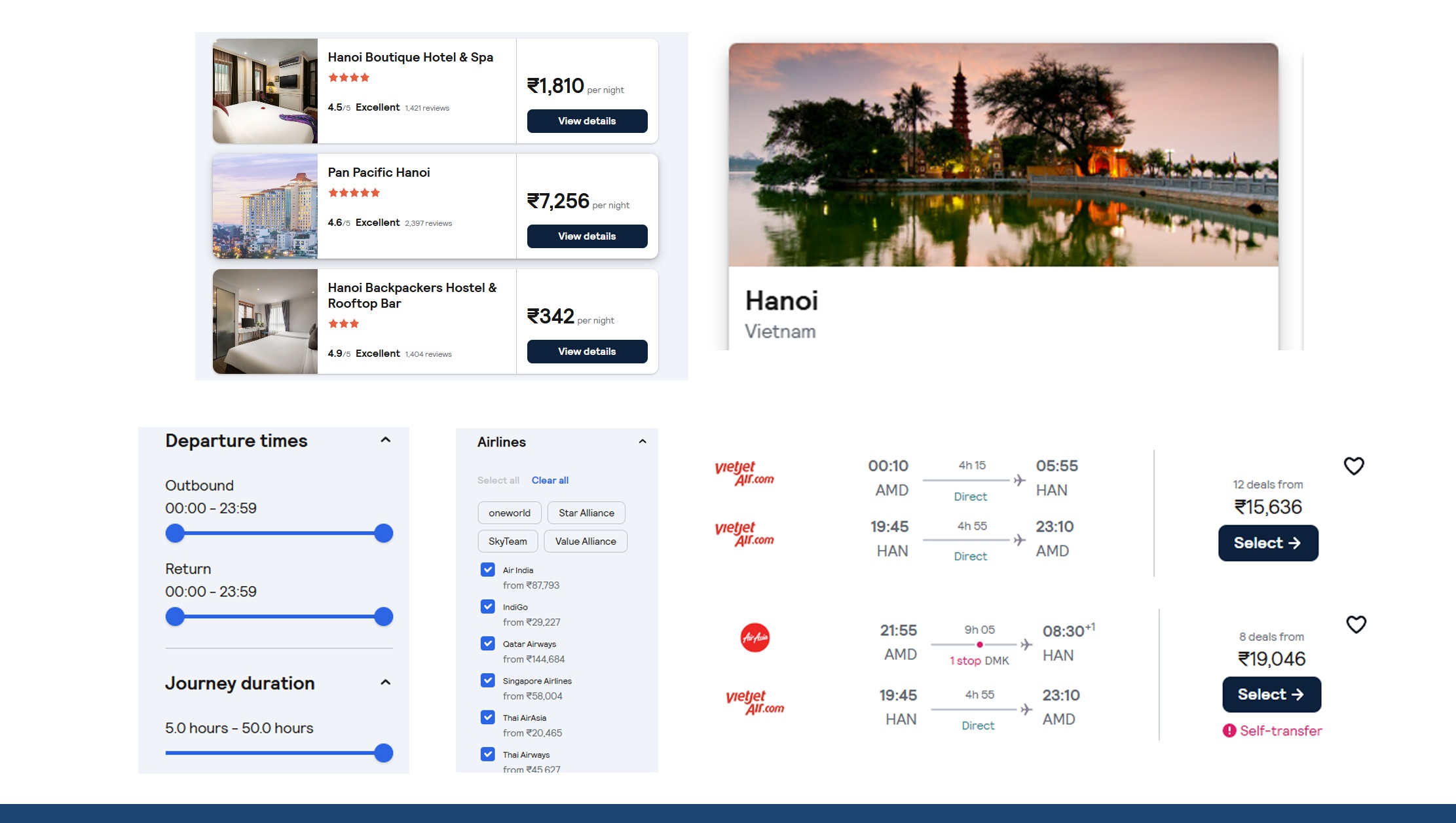
1. Accuracy: Automated scrapers are more reliable than manual tracking.
2. Speed: Scraping large volumes of data in real time.
3. Customization: Choose your routes, destinations, or currencies.
4. Frequency: Run it hourly, daily, or weekly as needed.
5. Competitive Edge: Act on fresh pricing before your rivals do.
Challenges in Extracting Data from Skyscanner
Despite the benefits, scraping Skyscanner presents several hurdles:
| Challenge | Solution |
|---|---|
| JavaScript-heavy pages | Use Puppeteer or Playwright |
| Bot detection | Use proxies, rotate user-agents |
| CAPTCHA blocks | Integrate CAPTCHA solvers or delay scrapes |
| IP bans | Use residential proxies or VPNs |
| Legal boundaries | Always check TOS and scrape responsibly |
Ethical Guidelines & Best Practices
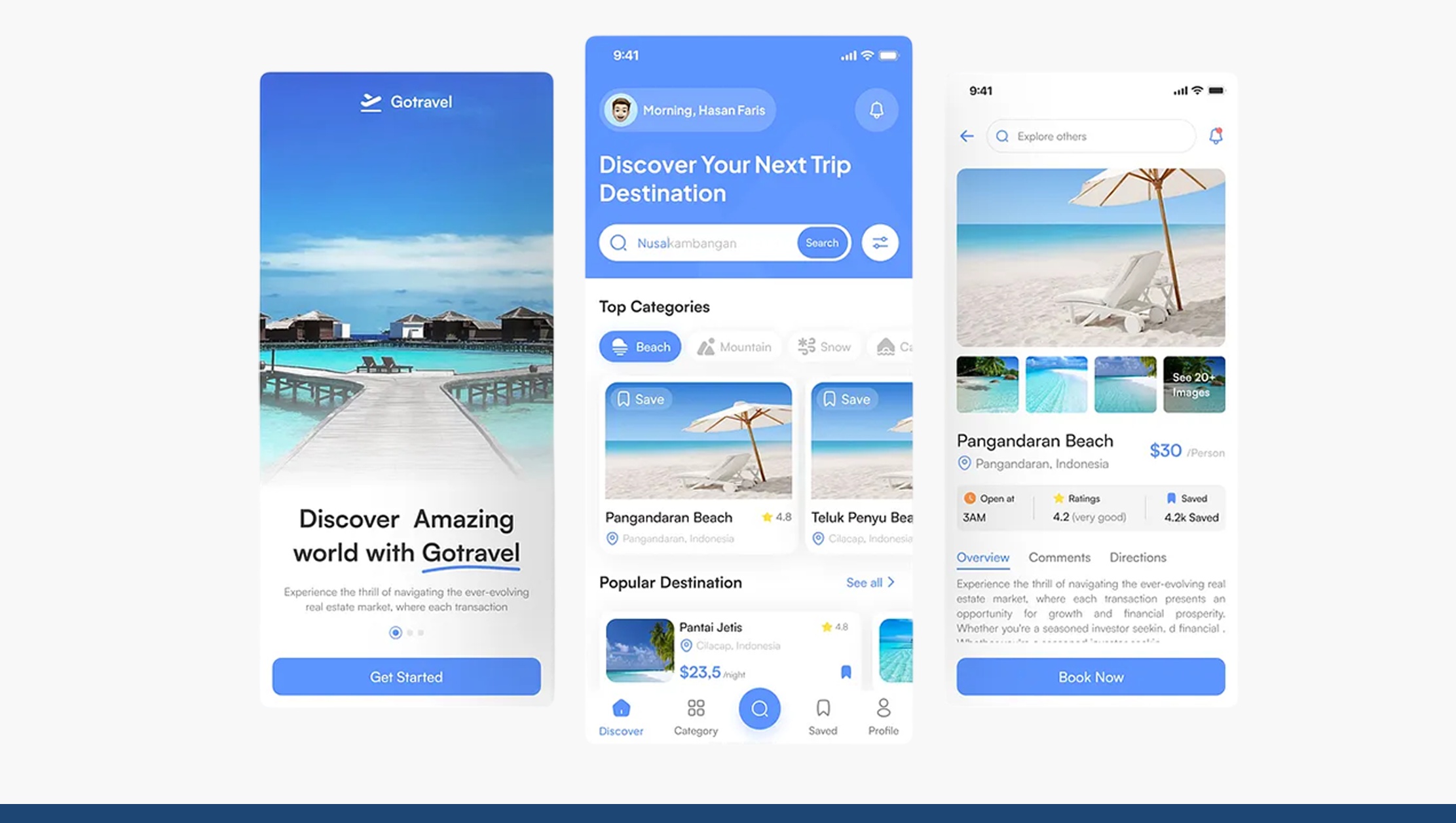
If you're planning to extract data from Skyscanner, here’s what you should follow:
- Respect robots.txt and site structure
- Limit request frequency
- Use scraping only for analytical/internal use
- Avoid reposting data publicly or commercially
- Disclose scraping in your project documentation if possible
Building a Skyscanner Travel Dataset for AI/ML Projects
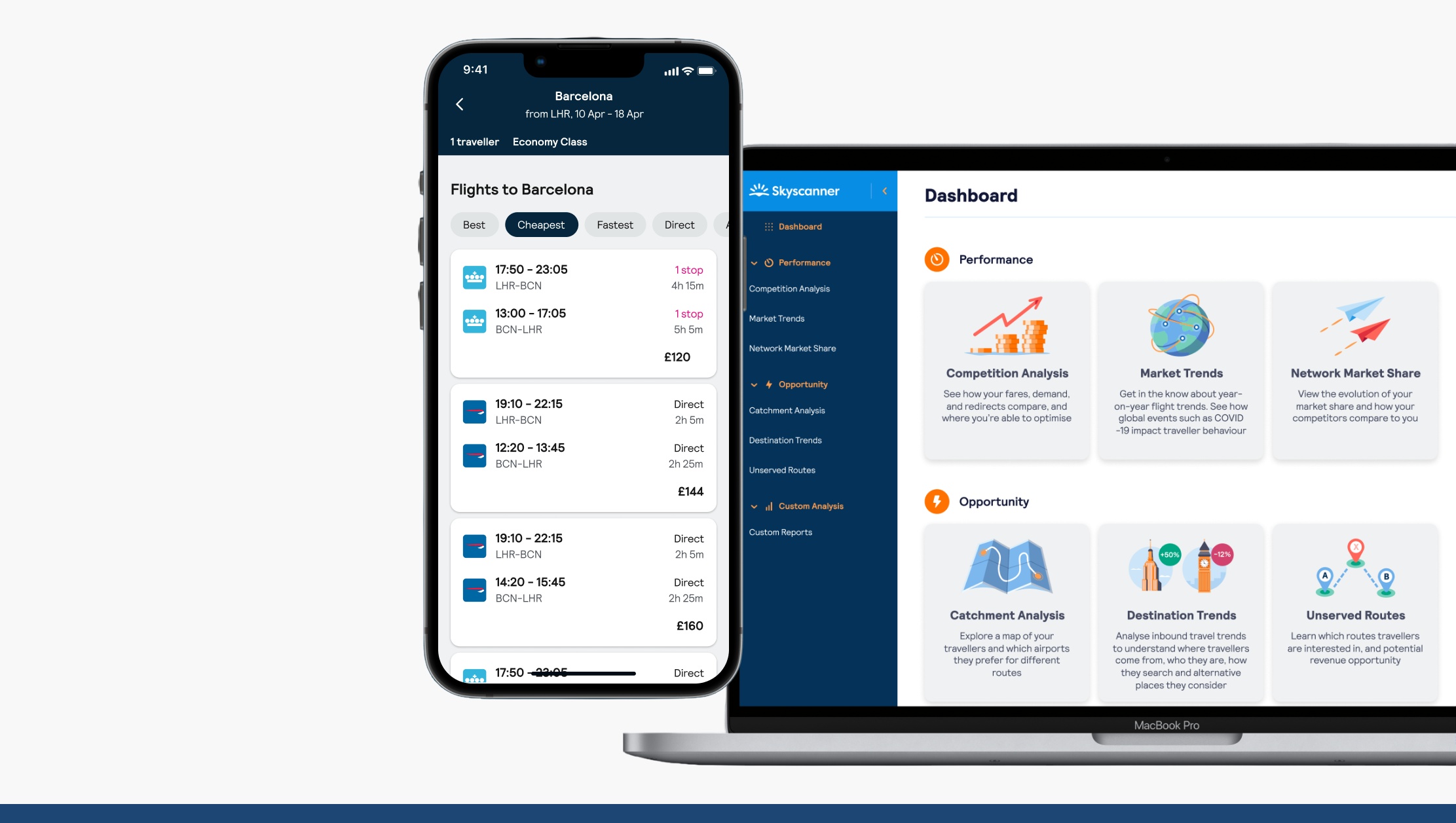
Scraped travel data can be a huge asset for machine learning:
- Predict flight price trends using time-series models
- Build recommender engines for travel deals
- Train NLP models to summarize travel reviews
- Cluster hotels/flights by pricing, features, or sentiment
You can enrich your Skyscanner travel dataset by combining it with:
- Google Trends for destination popularity
- Weather APIs for travel-seasonality data
- Social media insights for sentiment analysis
Sample Skyscanner Travel Dataset Fields
{
"departure_city": "New York",
"arrival_city": "London",
"airline": "British Airways",
"price_usd": 420,
"departure_time": "2025-08-20T15:00:00Z",
"arrival_time": "2025-08-21T07:45:00Z",
"direct_flight": true,
"flight_duration": "7h 45m"
}
You can export the data in formats like CSV, JSON, or SQL for further use.
Choosing the Right Skyscanner Scraping Partner

If you're not building your own scraper, consider outsourcing to professional Skyscanner web scraping service providers. Here’s what to look for:
- Proven experience with travel portals
- Legal compliance in scraping practices
- Scalable infrastructure (cloud, proxy support)
- Real-time or scheduled scraping capability
- Custom API or dashboard delivery
Output Delivery Options
Once extracted, your Skyscanner data can be delivered via:
- RESTful API access
- Downloadable CSV/JSON reports
- Cloud-hosted databases (MySQL, MongoDB, etc.)
- Google Sheets or Excel
- Dashboard integrations like Power BI or Tableau
Real-World Applications of Skyscanner Scraped Data
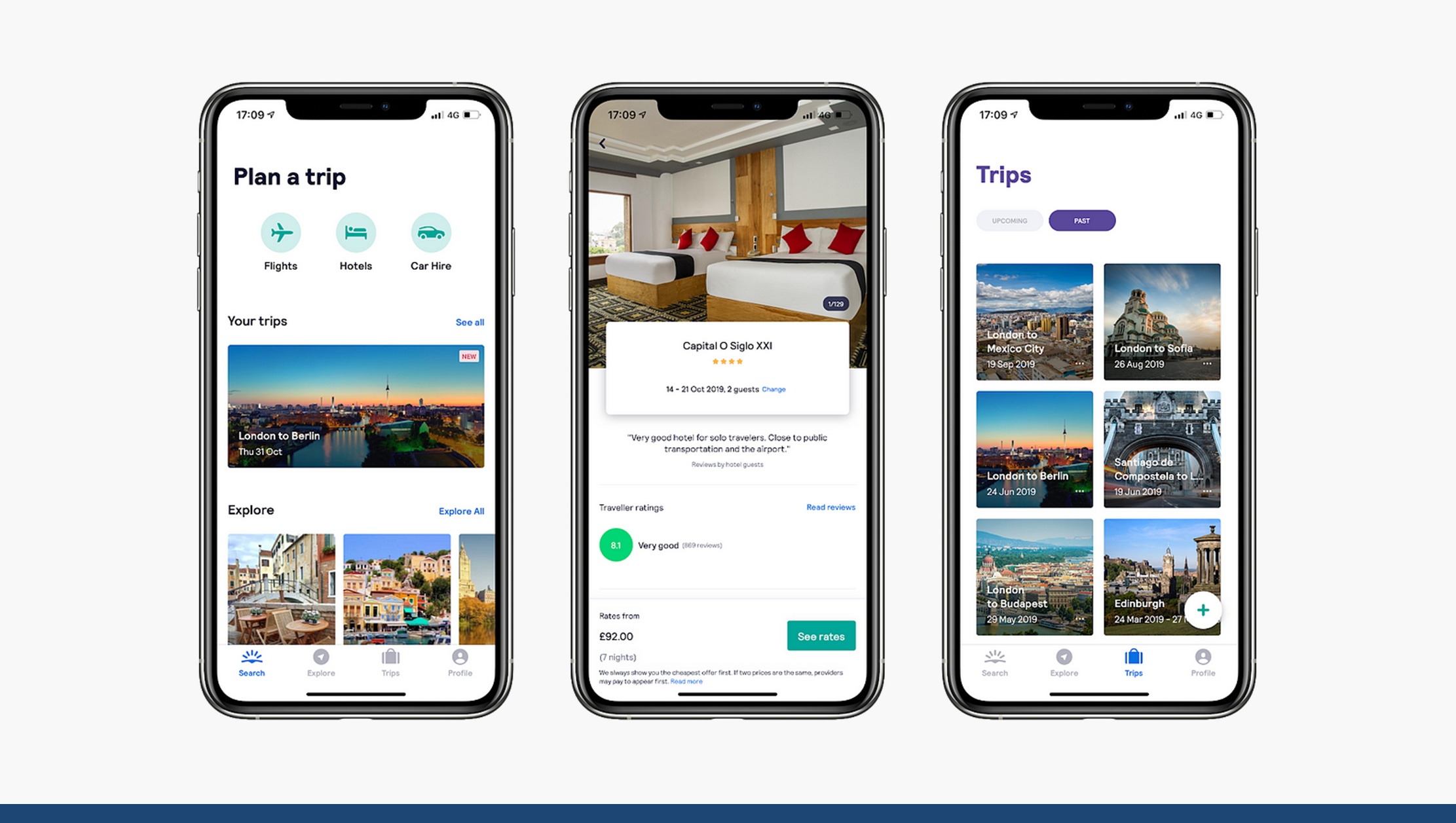
1. Flight Price Alert Apps
2. Hotel Review Aggregators
3. Travel Planning Platforms
4. Competitor Price Monitors
5. Car Rental Deal Finders
6. Affiliate Travel Sites
7. B2B Travel Analytics Tools
Future of Travel Intelligence with Scraping
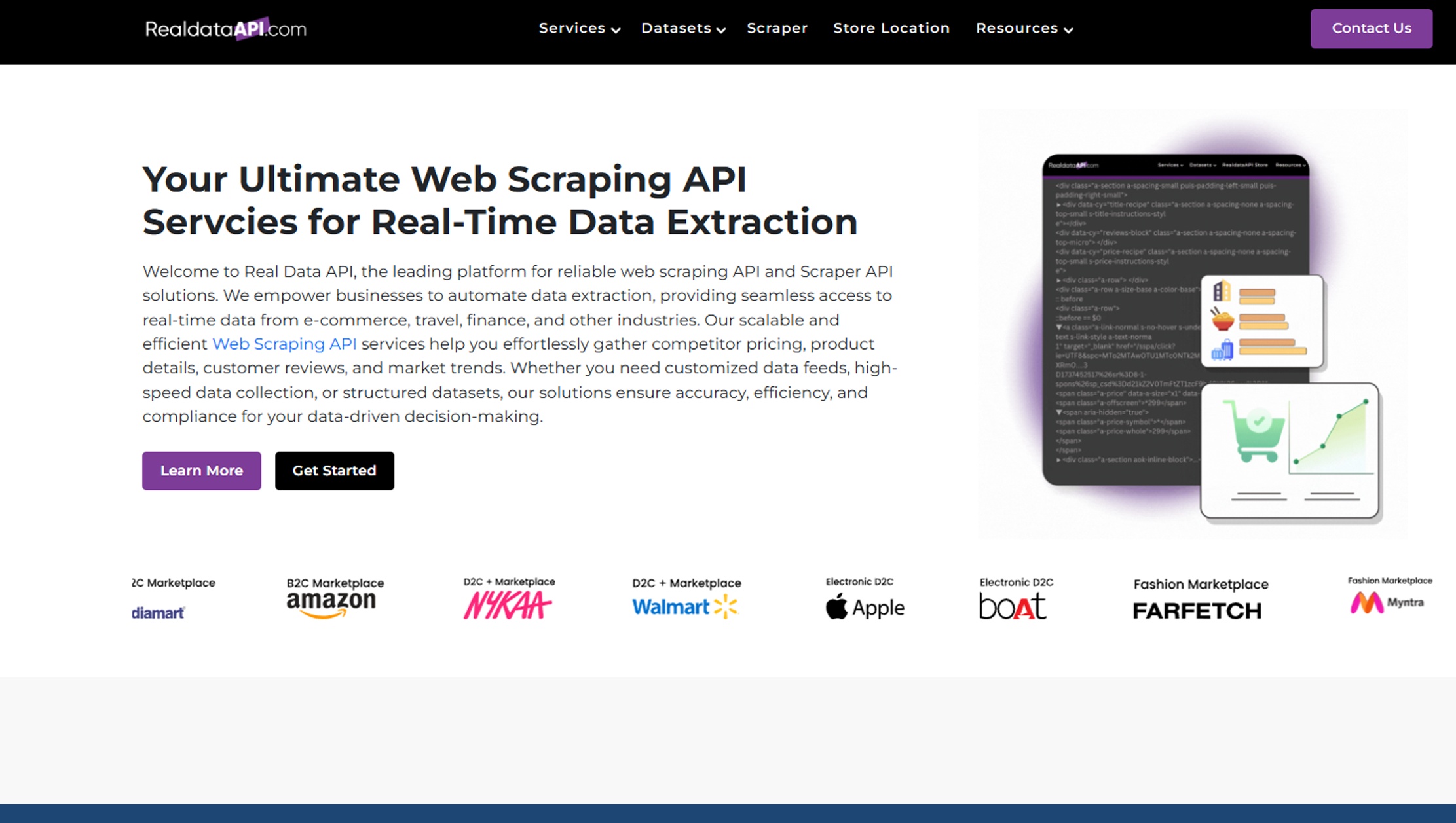
Web scraping from platforms like Skyscanner is just the beginning. With the growing use of AI and big data, the travel industry is entering a phase of:
- Predictive pricing based on demand models
- Smart routing and fuel optimization
- Real-time demand forecasting
- Personalized travel bundling based on browsing history
The combination of Skyscanner scraper tools and AI could transform travel intelligence across industries.
Final Thoughts
In the fast-paced travel landscape, staying ahead of trends, prices, and customer preferences is crucial. With reliable Skyscanner web scraping services, businesses can build their own travel intelligence pipelines, enhance their offerings, and drive smarter decisions. Whether you're building a Skyscanner travel dataset for research or building a full-scale comparison engine, web scraping can unlock powerful opportunities—when done ethically and responsibly. If you're looking to extract data from Skyscanner, choose tools or partners that can ensure legal compliance, scalability, and data accuracy. Supercharge your travel platform with Real Data API — extract accurate, real-time Skyscanner data for smarter pricing, planning, and competitive insights!













